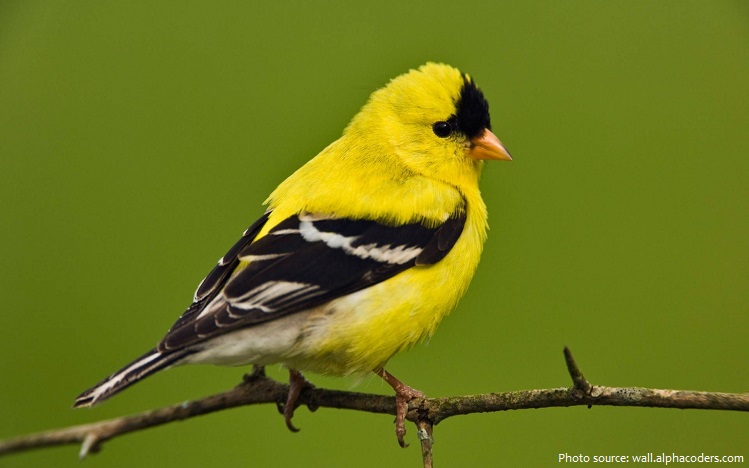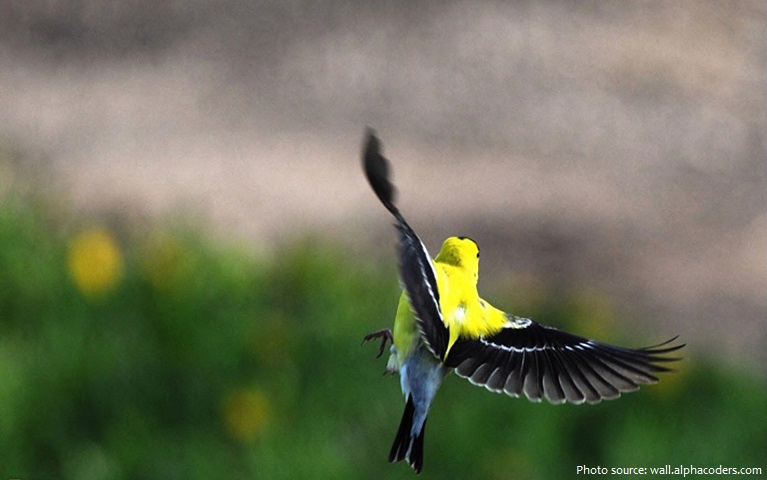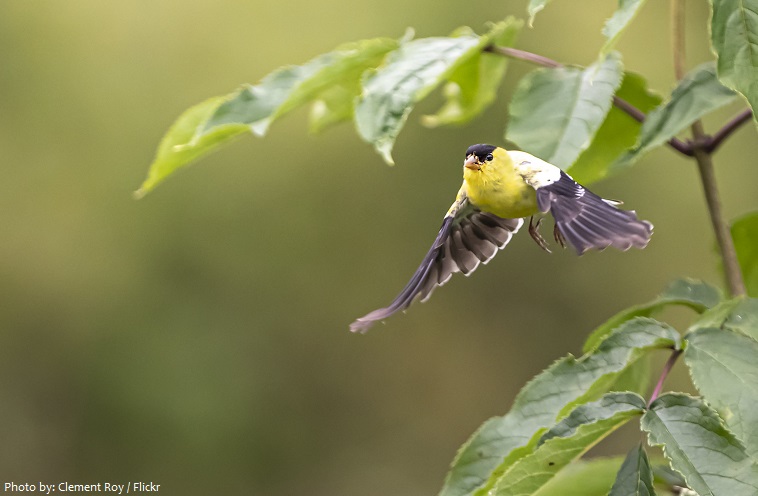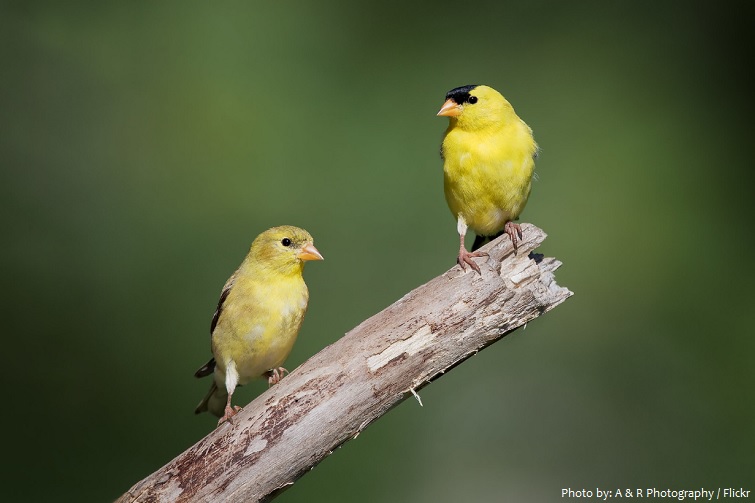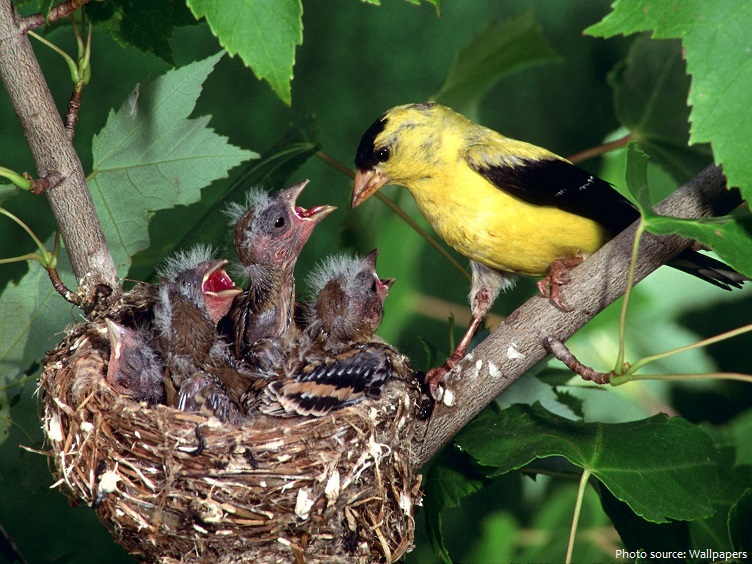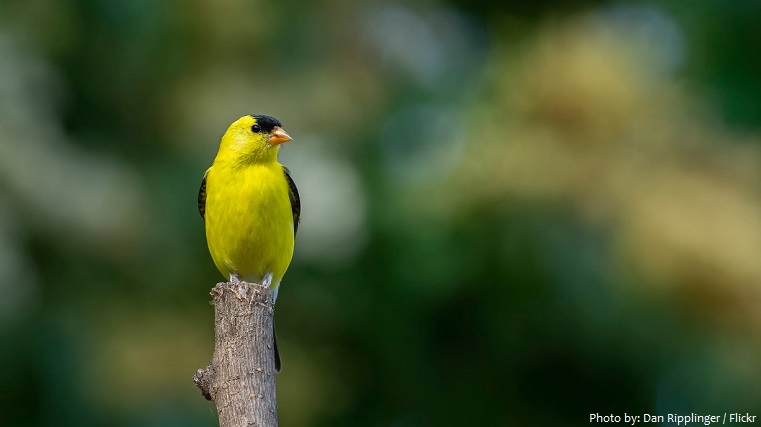The American goldfinch is a small North American bird in the finch family.
It is native to the Nearctic and widespread across most of North America.
Their range extends as far north as Saskatchewan, Quebec and southwest Newfoundland. In the central United States from coast to coast, they live year-round. They spend the winter in southern states and down into Mexico.
American goldfinches are widely distributed on the edges of many forests and plains. They prefer weedy fields and floodplains. These habitats include early successional growth areas, cultivated lands, roadsides, orchards, and suburban gardens.
These birds have a lifespan of 3 to 6 years in the wild. The oldest known American goldfinch was 10 years and 5 months old.
The American goldfinch is a small finch, from 11 to 14 cm (4.3 to 5.5 in) long, with a wingspan from 19 to 22 cm (7.5 to 8.7 in). It weighs between 11 and 20 g (0.39 and 0.71 oz).
The American goldfinch has very interesting coloration – Adult males in spring and summer are bright yellow with black forehead and wings. Females are dull yellow below and olive above with two distinct wingbars. In winter, they are drab, buffy-brown.
The American goldfinch is a granivore and adapted for the consumption of seedheads, with a conical beak to remove the seeds and agile feet to grip the stems of seedheads while feeding. This finch has also been known to eat garden vegetation, and is particularly fond of beet greens.
These birds are very active and acrobatic.
The American goldfinch flies in a distinctive undulating pattern, creating a wave-shaped path. This normally consists of a series of wing beats to lift the bird, then folding in the wings and gliding in an arc before repeating the pattern. This flight causes a flock to have a light, buoyant, dancing appearance.
American goldfinches often vocalize during the flapping phase of the pattern and then go silent during the coasting phase. The call made during flight is “per-twee-twee-twee”, or “ti-di-di-di”, punctuated by the silent periods.
The American goldfinch is a social bird, and will gather in large flocks while feeding and migrating.
This species is generally monogamous, and produces one brood each year.
In the winter, males and females form mating pairs. Males use their bright feathers to attract mates. They also show off to females with different flight routines.
American goldfinches usually start building nests in late June or early July. They build nests about 1 meter (about 3 feet) off the ground from twigs and branches found nearby. Females lay 2 to 7 eggs, which they keep warm for 15 days until they hatch. While females are sitting on the nest, males bring them food they have eaten but not yet digested. When the chicks are born, they are usually naked or have just a few feathers.
After the chicks hatch, males take on most of the responsibility for looking after the chicks. Females chase intruders away from the nest, forage for food, and return to feed the chicks through spitting up undigested food. After 8 days, chicks are able to be independent, but they stay close to their parents. They can fly in 11 to 17 days, usually about 14. Even after they leave the nest, they rely on their parents for 3 to 4 more weeks. When they are 11 months old, they are able to breed and raise their own young.
Predators include snakes, weasels, squirrels, and blue jays, which may destroy eggs or kill young, and hawks and cats, which pose a threat to both young and adults.
American goldfinches have stable populations. The IUCN Red List classifies them as “least concern”.
The American goldfinch is the state bird of Iowa and New Jersey, where it is called the eastern goldfinch, and Washington, where it is called the willow goldfinch. It was chosen by schoolchildren in Washington in 1951.
Despite sharing a common name, the American Goldfinch is not closely related to the European Goldfinch.
Human activity has generally benefited the American goldfinch. It is often found in residential areas, attracted to bird feeders which increase its survival rate in these areas.
American goldfinches help in the dispersal of seeds because seeds are their main food source.
The American goldfinch was one of the many species originally described by Carl Linnaeus in the landmark 1758 10th edition of his work Systema Naturae.
